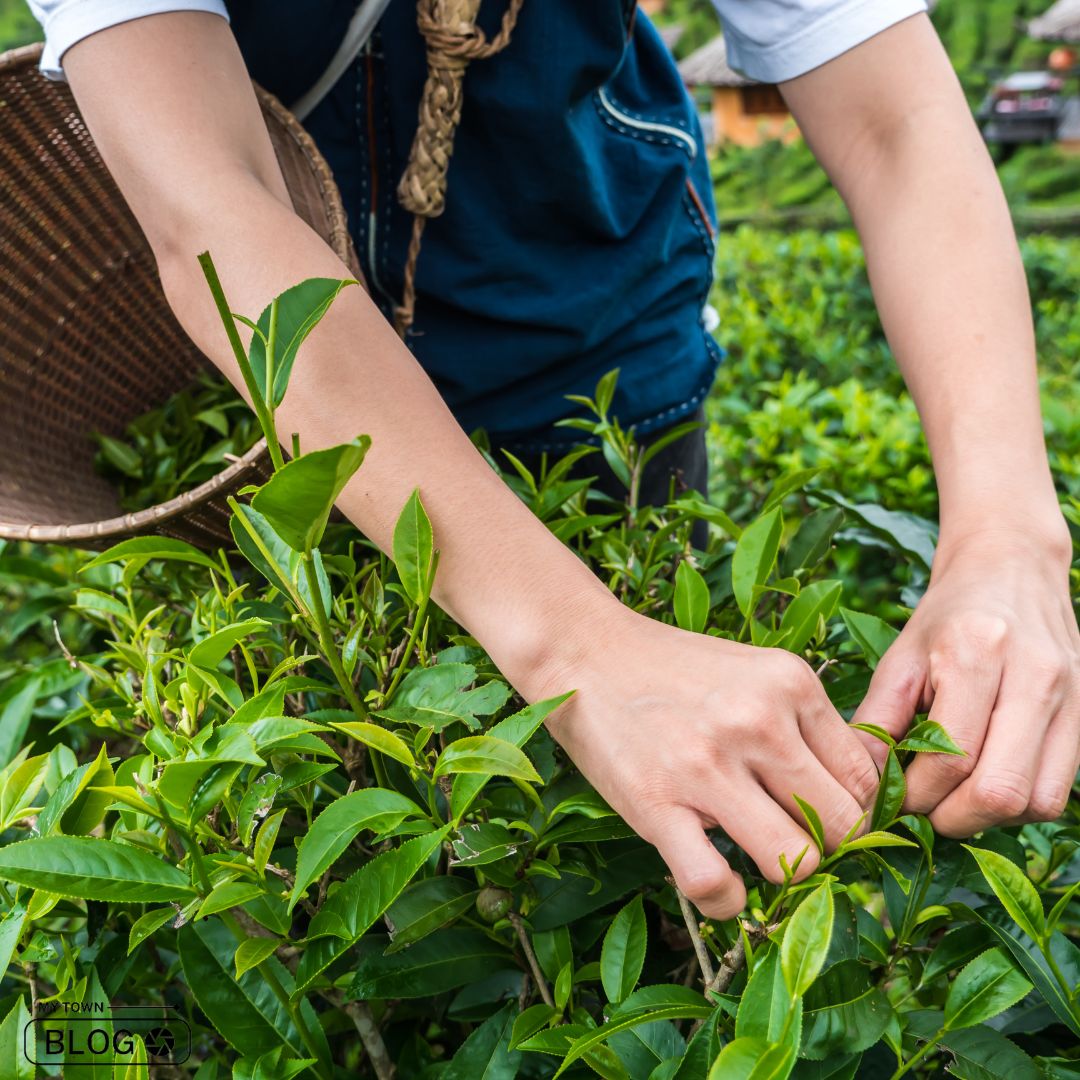India, a country that needs no introduction when it comes to tea, holds a significant place in the world of tea cultivation. The vast tea plantations, affectionately known as the “Tea Garden of India,” adorn the landscape with picturesque greenery. From the fertile plains of Assam to the misty slopes of Darjeeling and the tranquil valleys of Nilgiri. Tea estates in India offer a diverse and enchanting experience for both tea enthusiasts and curious travelers.
Tea Cultivation in India
The journey of tea cultivation in India began during the early 19th century when the British East India. Company brought tea plants from China. Seeking to break China’s monopoly on tea production. The British planted the seeds of what would later become a thriving industry. The favorable climate, abundant rainfall, and rich soil of regions like Assam, Darjeeling, and Nilgiri proved to be ideal for cultivating tea.
Today, India stands proudly as one of the largest tea producers globally, contributing significantly to the world’s tea consumption. The tea plantations not only represent agricultural enterprises but also embody the cultural heritage and traditions associated with this soul-soothing beverage.
Banyan Grove on Gatoonga Tea Estate, Assam
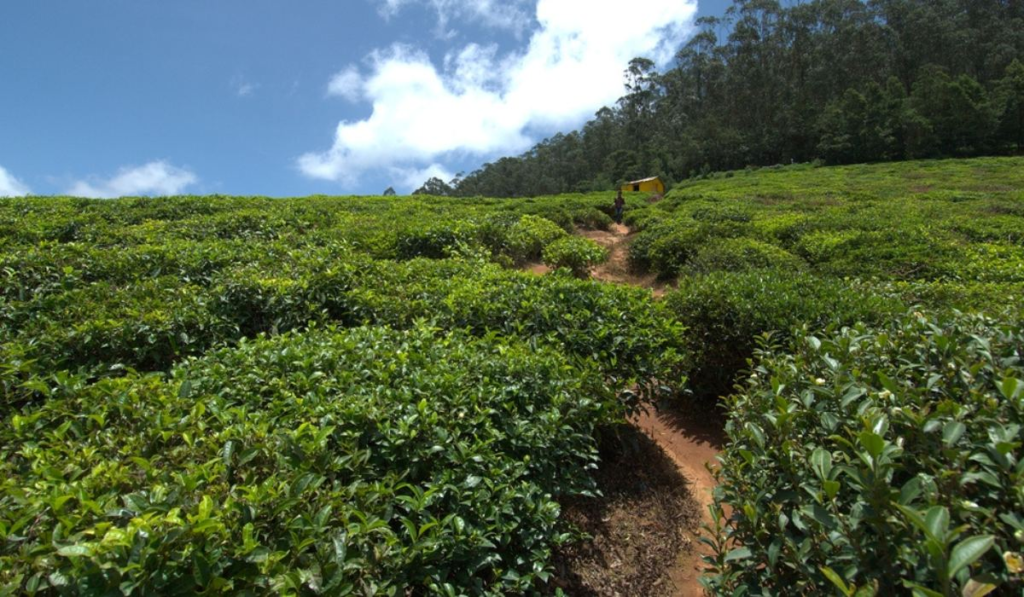
As we delve into the heart of Assam, we find ourselves captivated by the Banyan Grove on Gatoonga Tea Estate. Amidst the dense foliage, the ancient banyan trees stand as silent sentinels, witnessing generations of tea pluckers meticulously harvesting the tender leaves. Assam produces robust and malty black teas, and it is renowned for them, thanks to its fertile plains and high humidity. The bold flavor and bright liquor of Assam tea have made it a staple morning cup for tea drinkers worldwide.
Location: Gatoonga Tea Estate, Jorhat, Assam, 785616
Happy Valley Tea Estate, Darjeeling
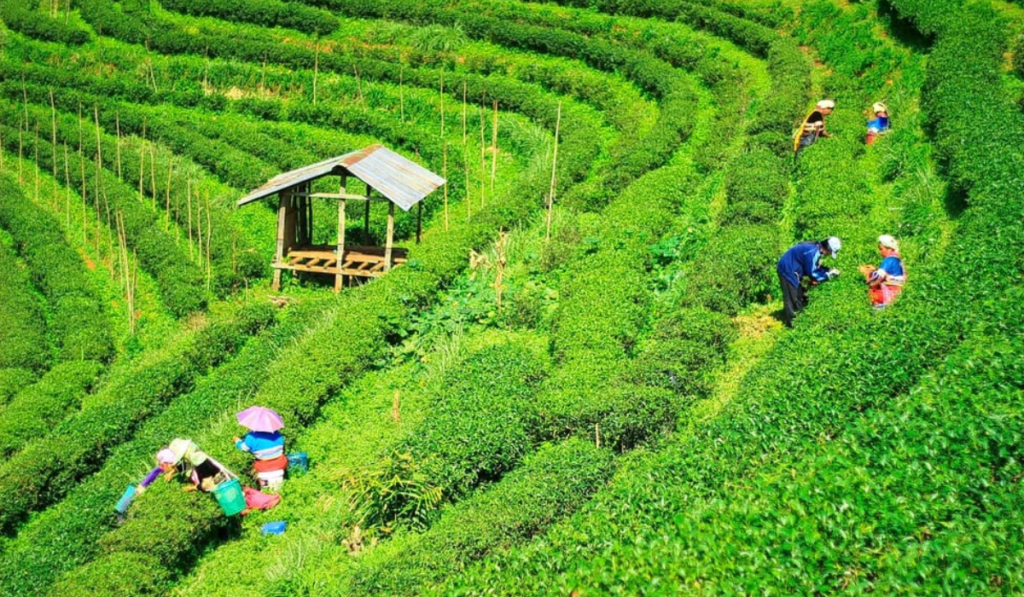
Let’s explore the Happy Valley Tea Estate, located amidst the enchanting slopes of Darjeeling, where the sweet scent of tea fills the air. The picturesque landscape, veiled in mist, provides the perfect ambiance for cultivating the world-famous Darjeeling tea. This high-altitude tea region produces a delicate and flavorful brew with a unique “muscatel” taste. As the sun rises and sets over the undulating hills, tea aficionados indulge in the ethereal charm of Darjeeling tea. Considering it a connoisseur’s delight.
Location: Lebong Cart Road, Chauk Bazaar, Near, Darjeeling, West Bengal, 734101
Kelagur Tea Estate, Karnataka
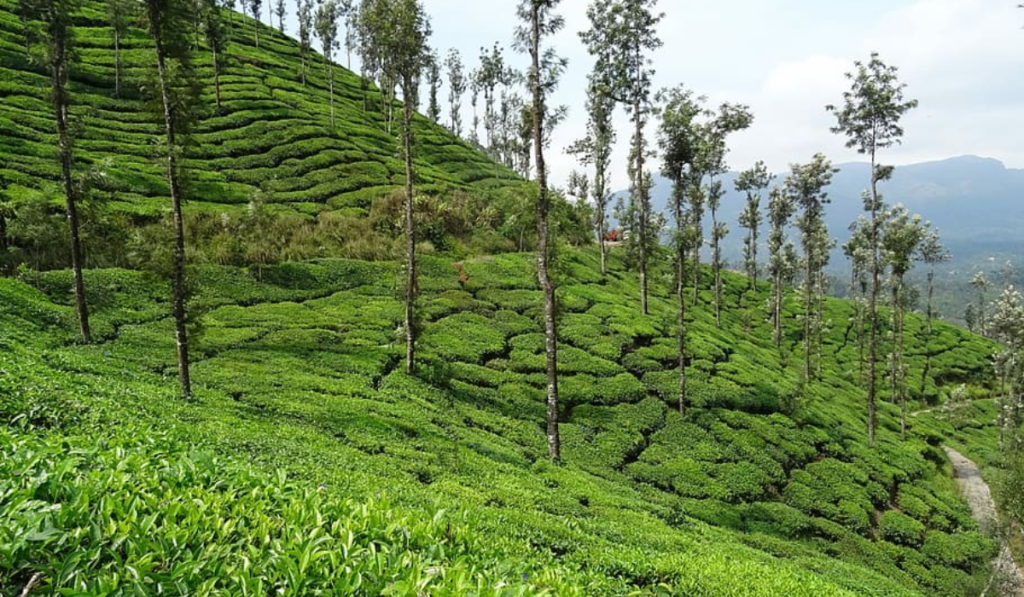
Journeying southwards, we traverse to the tranquil realms of Kerala, where the Kelagur Tea Estate graces the landscape. The gentle hills of Karnataka yield teas that are mellow and aromatic, winning the hearts of those seeking a soothing tea experience. While not as widely known as the northern estates, Kelagur’s tea offerings are no less captivating. The estate’s picturesque beauty and the hospitality of the locals add a special charm to the tea-tasting experience.
Location: SH 106, Kelagur, Karnataka, 577101
Kolukkumalai Tea Estate, Kerala
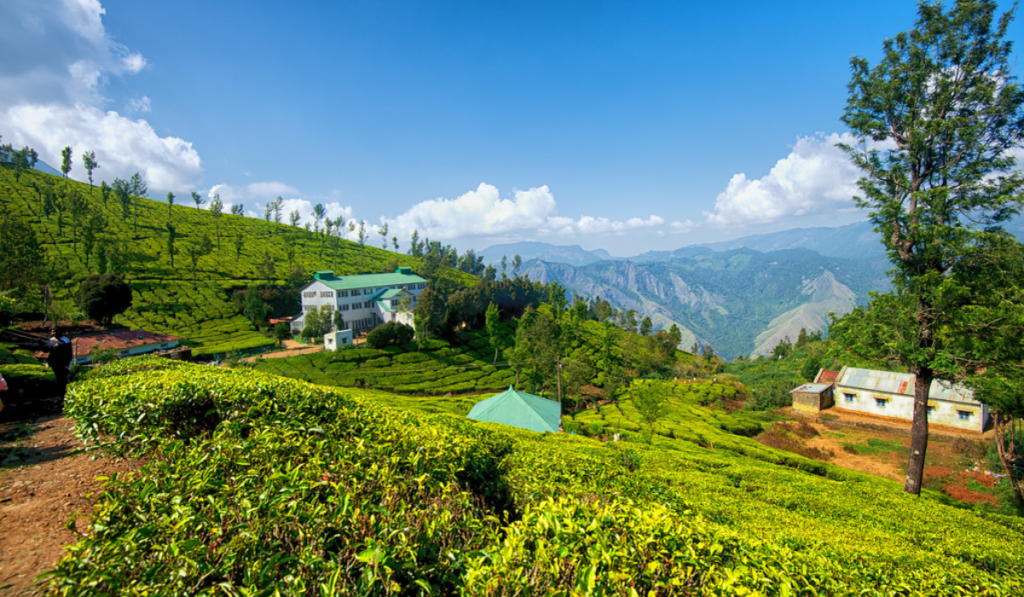
Our expedition takes us to the lofty heights of the Western Ghats. Where the Kolukkumalai Tea Estate stands as the highest tea plantation in the world. At such altitudes, the tea plants enjoy cooler temperatures, which contribute to the distinctive flavors of the teas produced here. The estate’s teas boast a bold and robust character, leaving a lasting impression on those who seek adventure in their tea cup.
Location: Kolukkumalai, Suryanelli, Munnar, Kerala
Darang Tea Estate, Himachal Pradesh
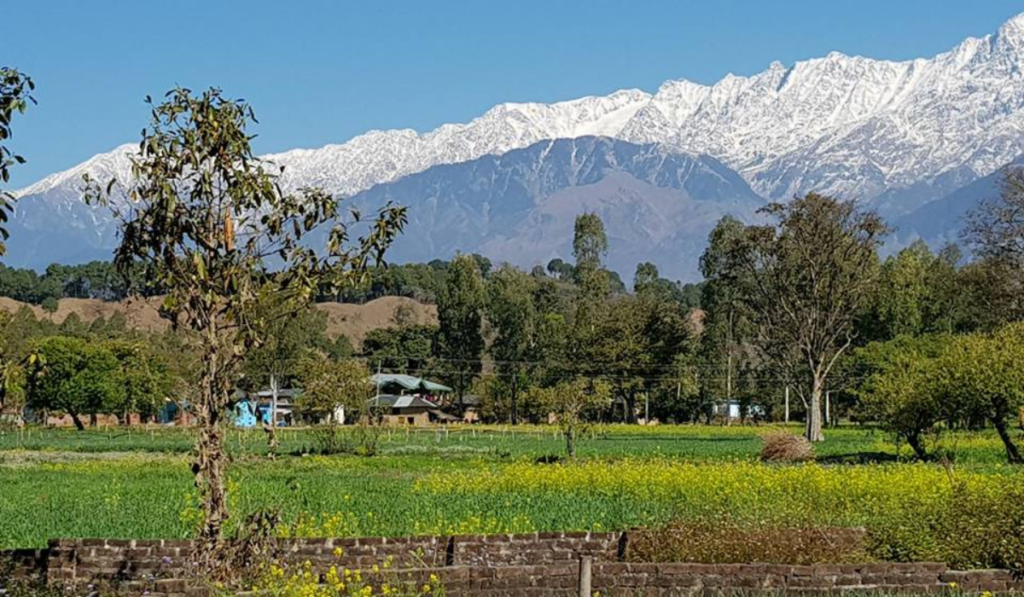
Venturing into the northern reaches of India, we discover the lesser-known Darang Tea Estate in Himachal Pradesh. This charming tea plantation in the lap of the Himalayas produces teas that are delicate and refreshing, reflective of the region’s pristine beauty. Despite not being as mainstream as its southern or northeastern counterparts, Darang Tea Estate holds its own with its exceptional tea offerings.
Location: Kangra, Darang, Himachal Pradesh, 170060
Nilgiri Tea Plantations, Tamil Nadu
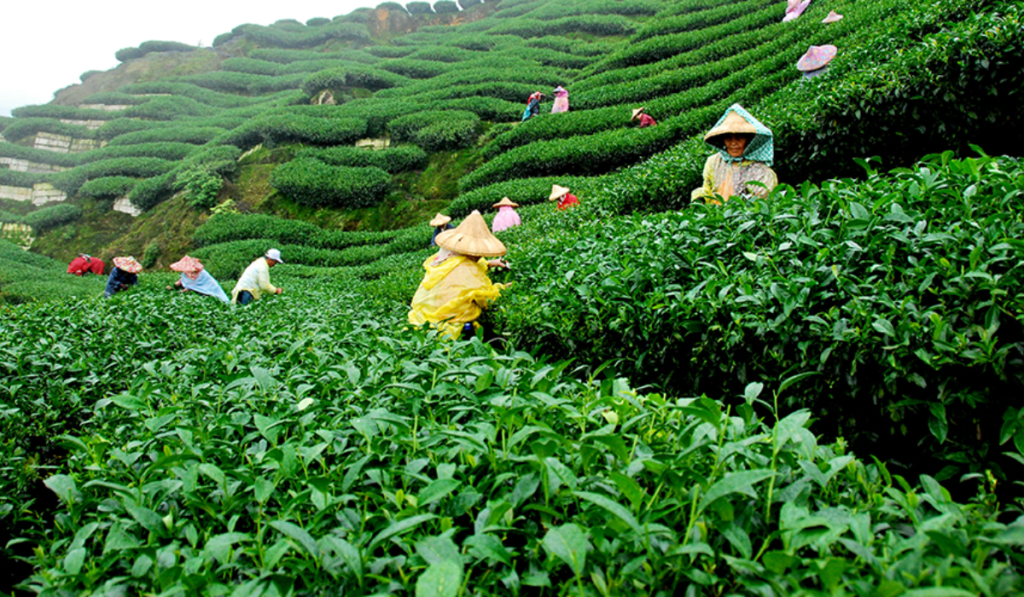
In the serene Nilgiri hills of South India, vast expanses of tea plantations paint the landscape with shades of green. These plantations yield teas that are mild and fragrant, appealing to those seeking a subtler tea experience. The cool climate and elevations ranging from 1,000 to 2,500 meters contribute to the unique flavors of Nilgiri teas, making them a beloved choice among tea enthusiasts.
Location: Ritz Hotel Road, Upper Vannarpet, Gray’s Hill, Coonoor, Tamil Nadu, 643101
Conclusion
As we conclude our journey through the tea plantations of India, it becomes evident that tea is not just a beverage; it is an integral part of the country’s fabric. The tea estates not only contribute significantly to India’s economy but also preserve age-old traditions and cultures. Each region we explored has its unique tea story to tell, captivating tea enthusiasts with their distinctive flavors and charming landscapes.
FAQs
How did tea cultivation begin in India?
Tea cultivation in India began during the 19th century when the British East India Company introduced tea plants from China to the region. The initial attempts faced challenges, but eventually, tea cultivation took root and expanded rapidly, giving birth to the thriving tea industry we see today.
Which region is famous for producing mild and fragrant black teas in India?
The Nilgiri region in South India is renowned for producing mild and fragrant black teas. The teas from this region are known for their delicate and aromatic characteristics, making them a popular choice among tea enthusiasts seeking a more subtle flavor profile.
In India, who produces the different types of tea?
India produces a wide variety of teas, including black, green, white, and oolong teas. Each type has its unique processing methods and flavor profiles, offering a delightful range of options for tea lovers to explore.
How does the tea industry contribute to India’s economy?
The tea industry plays a crucial role in India’s economy, providing employment to millions of people, particularly in rural areas. Tea exports also contribute substantially to the country’s foreign exchange earnings, making it an essential sector for India’s economic growth.
What challenges have the tea plantations faced, particularly regarding labor issues?
Tea plantations in India have faced challenges concerning labor rights and fair wages for plantation workers. Historically, there have been issues with exploitative practices and working conditions. The laborers are making efforts to improve these conditions and ensure fair treatment.
Are Indian teas exported globally, and what is their popularity in international markets?
Yes, Indian teas are exported to various countries worldwide and are highly regarded for their exceptional quality and diverse flavors. The teas’ popularity in international markets has grown significantly over the years. With many tea enthusiasts seeking out the unique and authentic teas produced in India.
What are some famous tea brands associated with Indian tea production?
India is home to several famous tea brands that have made a mark on the global stage. Some well-known brands include Tata Tea, Brooke Bond, Twinings India, and Typhoo, among others. These brands offer a wide range of teas that cater to different tastes and preferences.
How can one distinguish between authentic Indian teas and imitations in the market?
To ensure authenticity, consumers should look for reputed tea brands with proper certifications and labels indicating the origin of the tea. Authentic Indian teas typically have unique flavor profiles and characteristics specific to the region they are produced in. Purchasing from trusted sellers and reputable sources also helps guarantee genuine Indian teas.
